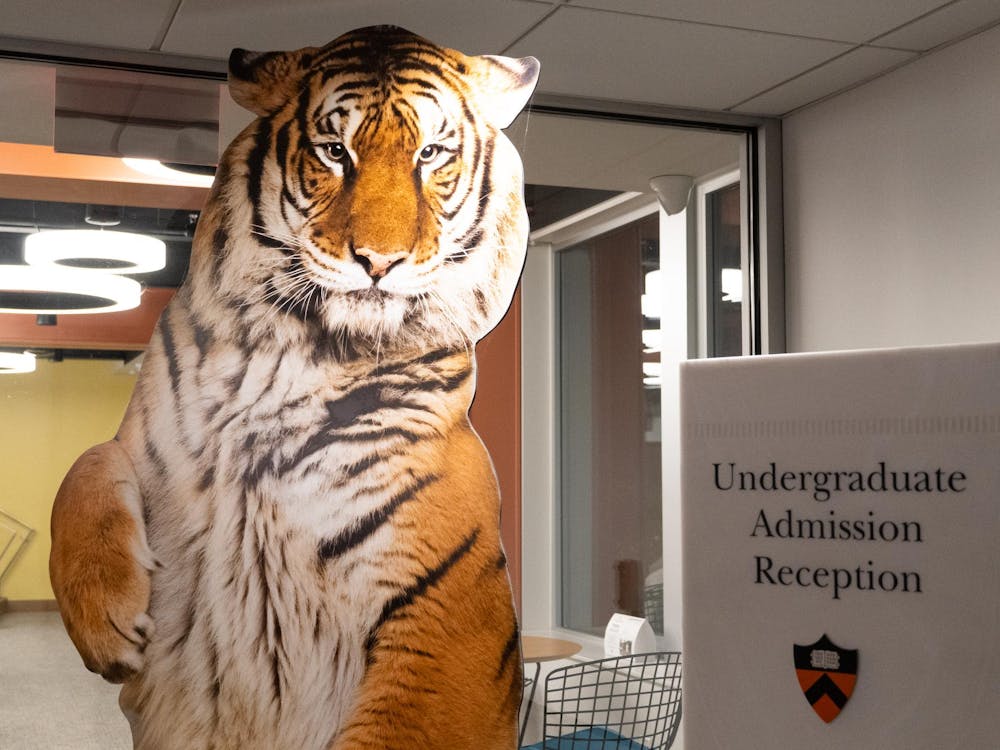The construction company Barr & Barr — the same firm that worked on Lewis Library and the Lewis-Sigler Institute for Integrative Genomics, among other buildings — broke ground on the new site in 2010, and the construction is expected to be fully complete by spring 2013.
The two buildings — located behind Poe Field on Washington Road — are connected by a public foyer whose main doors face Carl Icahn Laboratory and can be accessed from across Washington Road, via Streicker Bridge. A tunnel in the A-level will lead to the B-level of Icahn and continue up-campus along Washington Road all the way to Guyot Hall.
Currently, the company is laying the stone flooring and carpeting, Wilson said. Window installation will occur within the next two to three weeks.
“Our biggest push is to finish before winter hits so that we can have good humidity control,” Wilson said.
Once the humidity is controlled, Wilson explained, the construction crew will be able to place wooden furnishings such as desks and shelves in faculty offices.
The new psychology building will replace the functions of Green Hall, located across Washington Road from Firestone Library. The neuroscience building will house the interdisciplinary Princeton Neuroscience Institute, which is temporarily located in Thomas, Moffett and Schultz laboratories with the molecular biology department.
The psychology building will be closer to Washington Road than these temporary laboratories. Stretching seven stories above and below ground, the building has a total of 46,000 square feet.
Data processing rooms in the upper levels of the building have a view of Poe Field and the Graduate College tower. Faculty offices will be located along the Washington Road side of the building.
The public space connecting the two buildings will be 30,670 square feet in size and will be one level above ground. The lobby will look down into the A-level student center, where tables and chairs will be set up and provide a place for students and faculty to work.
The neuroscience building is 172,000 square feet in size, extending two stories above ground and two below. The lower levels are arranged so that student study spaces receive the most natural sunlight. The study spaces will be enclosed by glass doors, which allow the sunlight to get further into the center of the building. There are two skylights that allow more natural light into the lower levels of the neuroscience building. The smaller window lets sunlight into one of the classrooms and can be adjusted.
The laboratories are located on the middle floor and receive the least natural sunlight, which will help researchers perform environment-controlled experiments.
The building will include multiple 30-person classrooms and a lecture hall that seats 140 people. The lecture hall will have full A/V capabilities and three screen projectors, similar to Taylor Auditorium in Frick Chemistry Laboratory.

Sensitive equipment such as the MRI will be located closest to the ground at the B/C-level to minimize exposure to movement.
The project was originally delayed for financial reasons, but the economic downturn actually resulted in a lower building cost. In 2010, the expected construction cost was $180 million. University Executive Vice President Mark Burstein declined to say how much the construction ended up costing.
“We are still tracking to the budget of the project, and because we bid it out at a time when there was less construction in this region of New Jersey, we are still tracking to a lower project cost than we had originally projected,” Burstein said.







